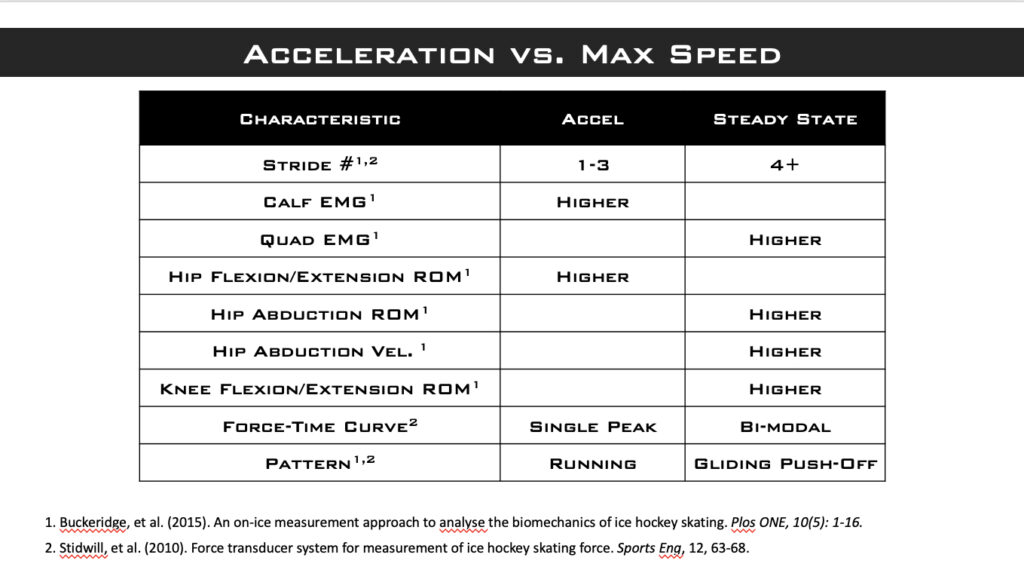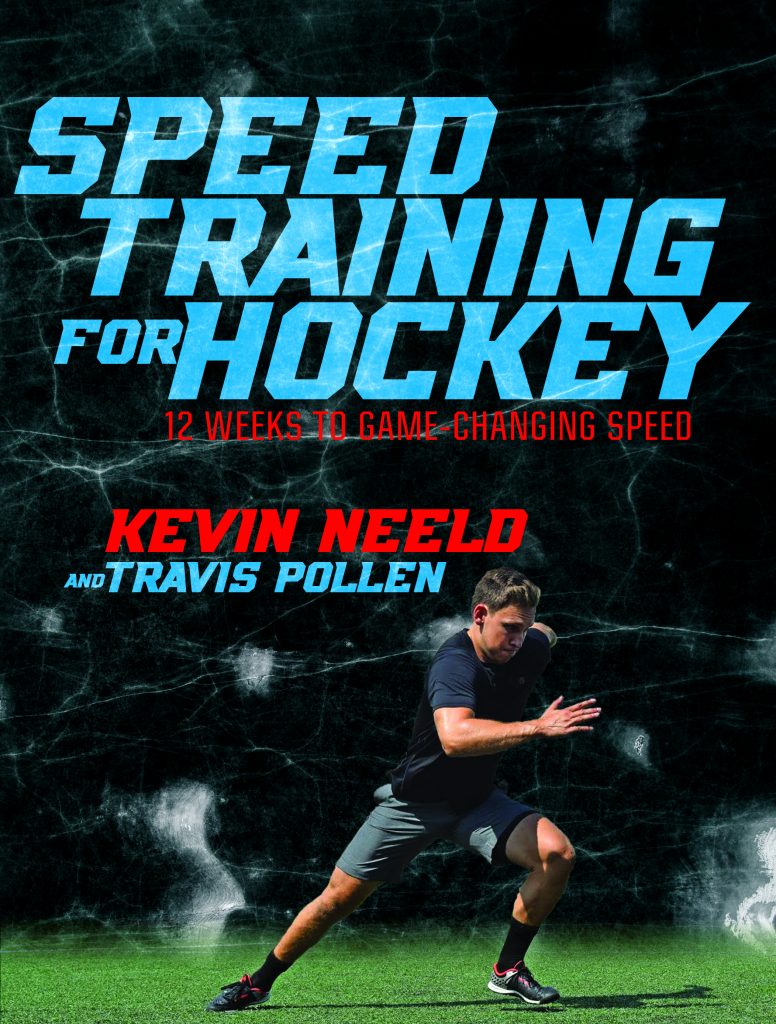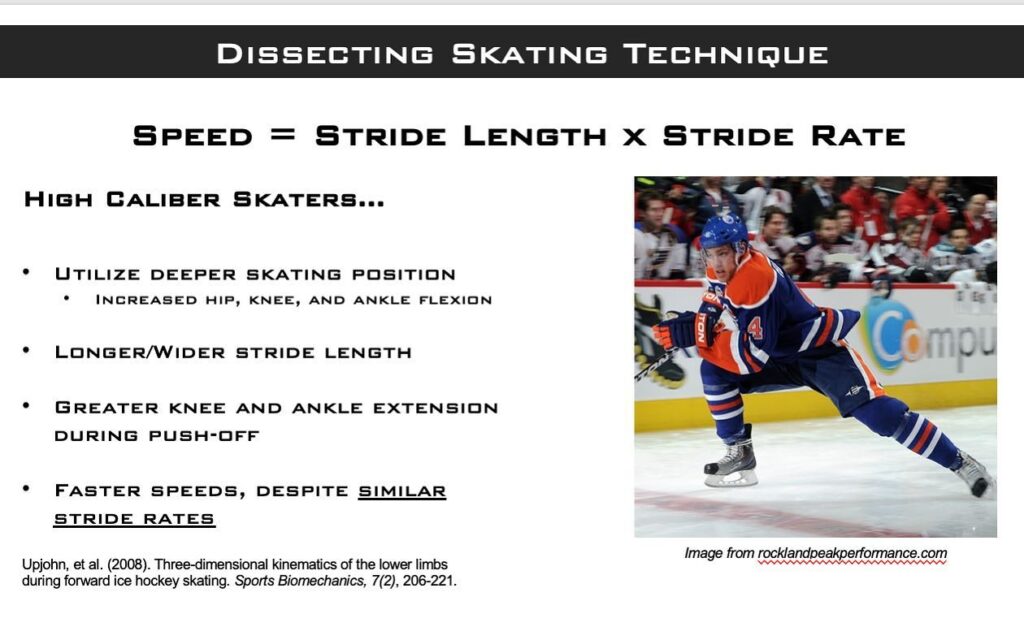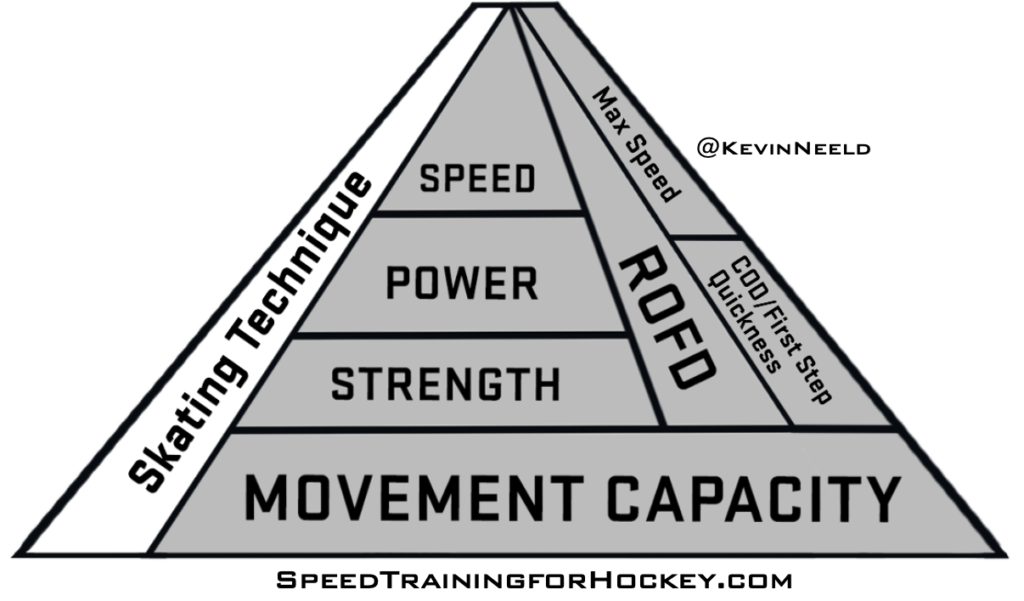There are two general ways to approach linear speed training:
1) Improving the rate at which a player approaches top speed (e.g. acceleration)
2) Improving top speed
It’s rare for a player to reach top speed with any regularity in hockey, whereas the ability to accelerate is integral to performance in every shift.
However, the top speed a player can reach creates a ceiling on how quickly they can accelerate, so training to improve max speed will positively impact acceleration ability.
With that in mind, it’s helpful to understand different characteristics of acceleration and steady state skating so training efforts can be either shifted to emphasize acceleration or max speed work to a greater extent, or to simply ensure that all of the necessary qualities are being addressed in a way that best transfers to the ice.
Summarizing work from Buckeridge et al (2015) and Stidwill et al. (2010)…
Acceleration, identified as the first 3 steps, is characterized by higher activity in the calves, a larger hip flexion/extension arc, and a single peak force-time curve.
This indicates a running-type pattern, with a more sagittal-plane dominant strategy.
Steady state skating is characterized by higher quad EMG, higher hip abduction ROM and velocity, a greater degree of knee flexion at weight acceptance and knee extension at toe off and therefore a greater knee ROM, and a bi-modal force-time curve. The bi-modal force-time curve is created by an initial peak at weight acceptance, a slight dip associated with loading the leg, and then a second peak for the push out.
These characteristics are indicative of a gliding push-off pattern, with more of a frontal plane emphasis.
Recognizing the differences in planes of movement, ranges of motion, and muscular contributions opens up a lot of possibilities for improving training specificity based on individual needs, and adjusting exercise selection and execution to maximize the on-ice transfer.
To your success,
Kevin Neeld
SpeedTrainingforHockey.com
HockeyTransformation.com
OptimizingAdaptation.com
P.S. If you’re interested in effective off-ice training programs specifically designed to improve speed, check out my new book Speed Training for Hockey.
Enter your first name and email below to sign up for my FREE Sports Performance and Hockey Training Newsletter!





